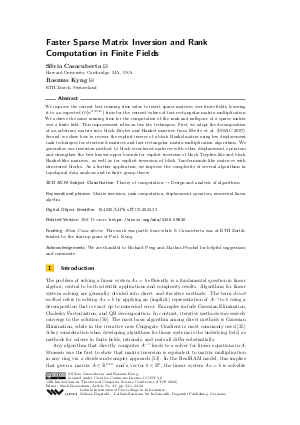LIPIcs.ITCS.2022.33.pdf
- Filesize: 0.78 MB
- 24 pages

 Creative Commons Attribution 4.0 International license
Creative Commons Attribution 4.0 International license





























































Feedback for Dagstuhl Publishing